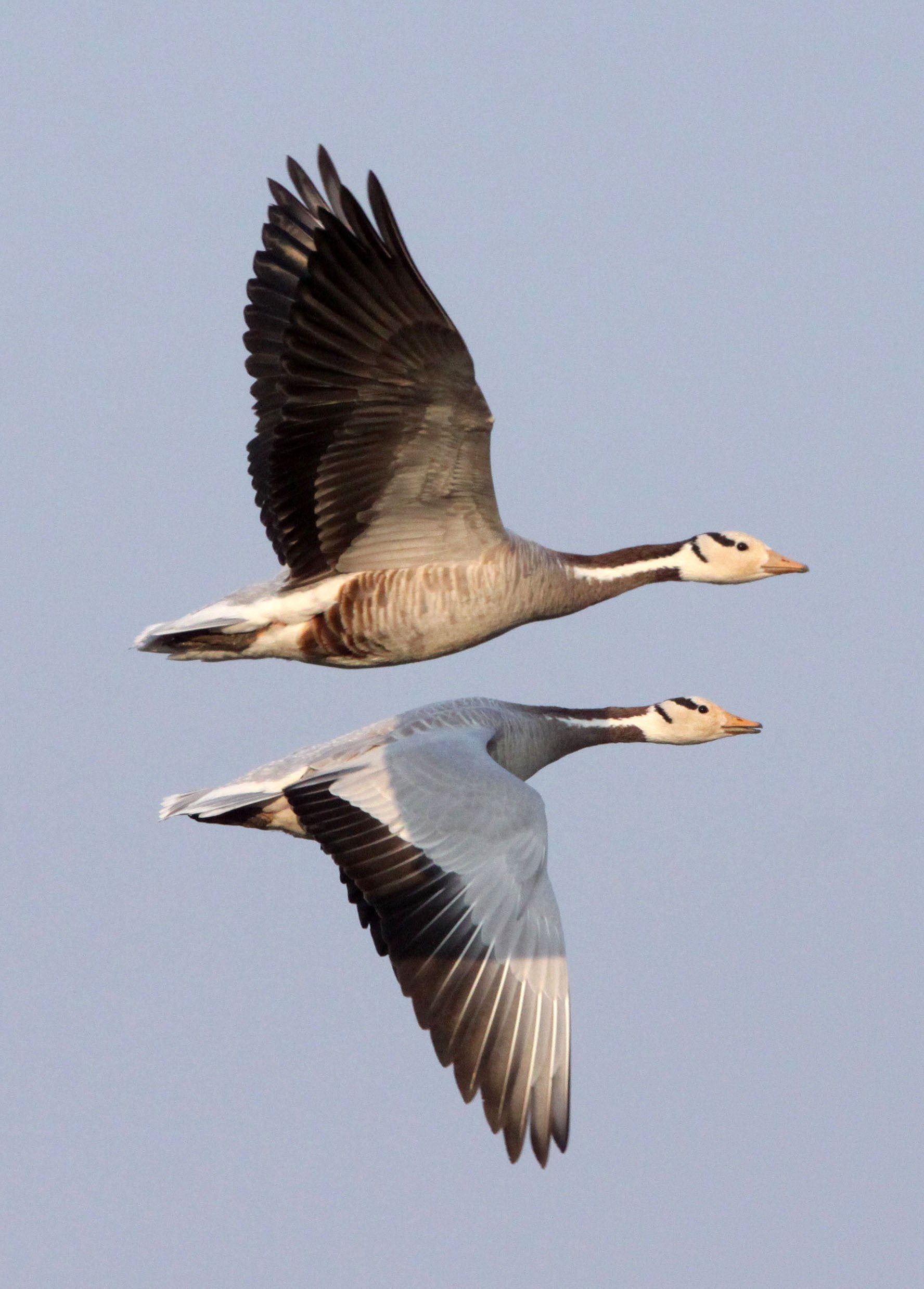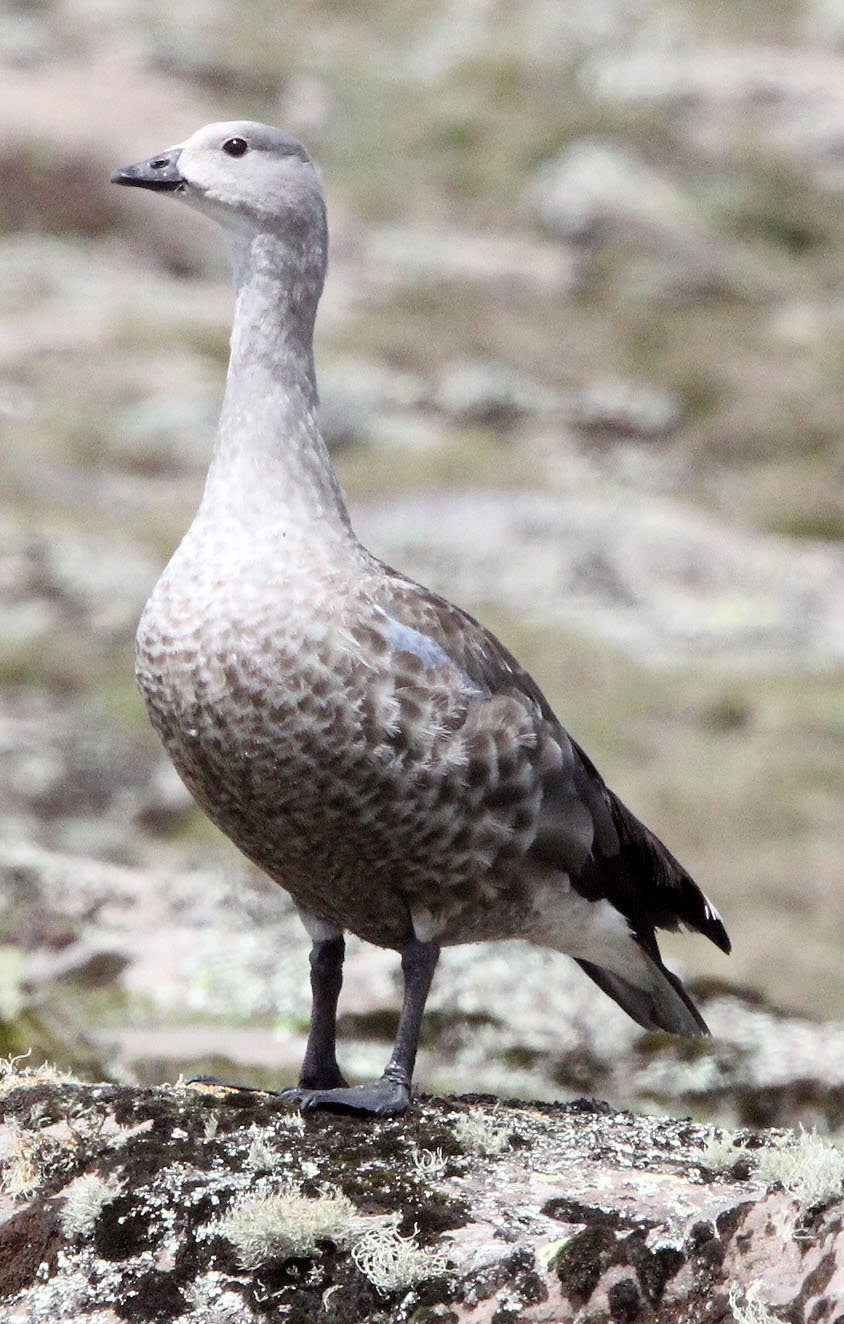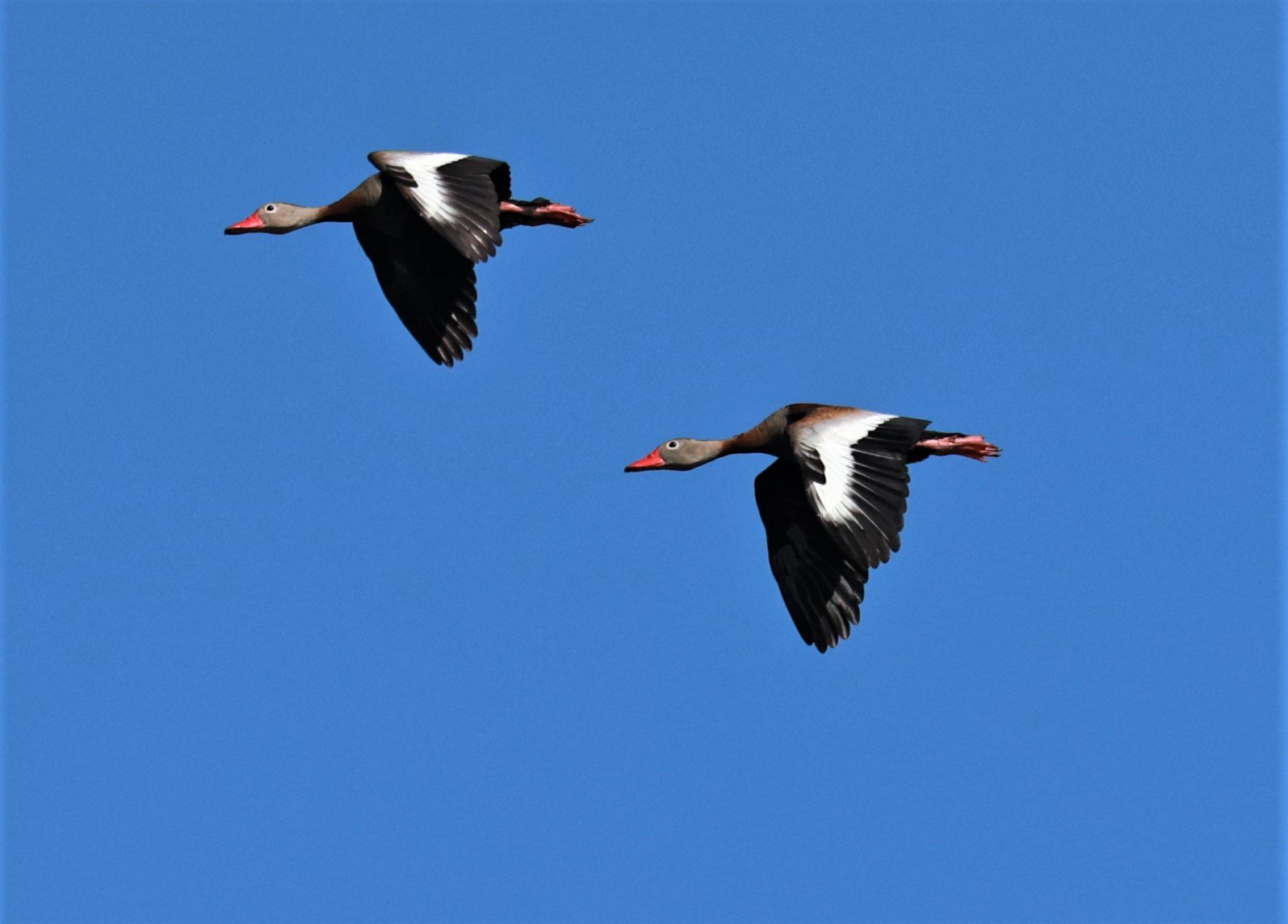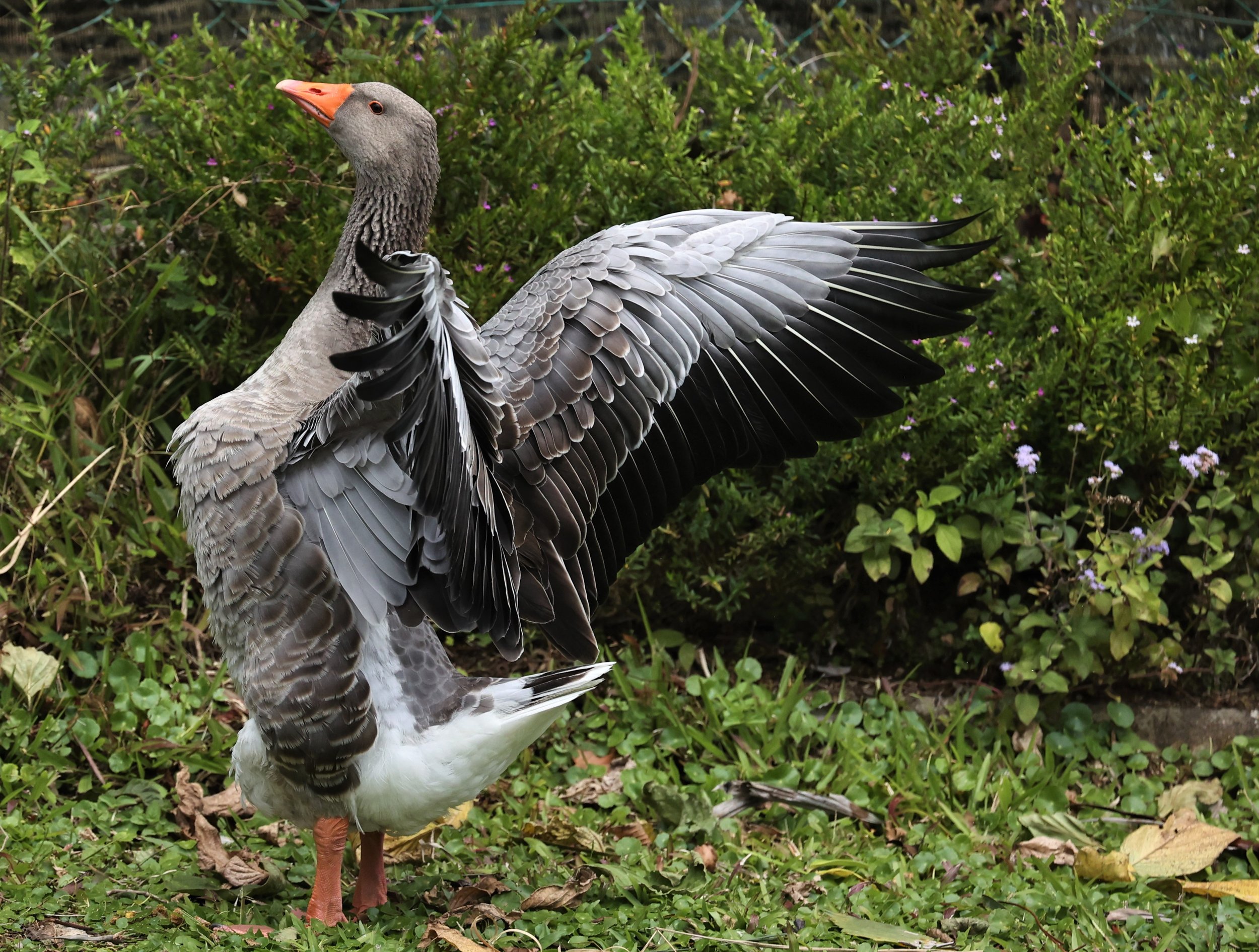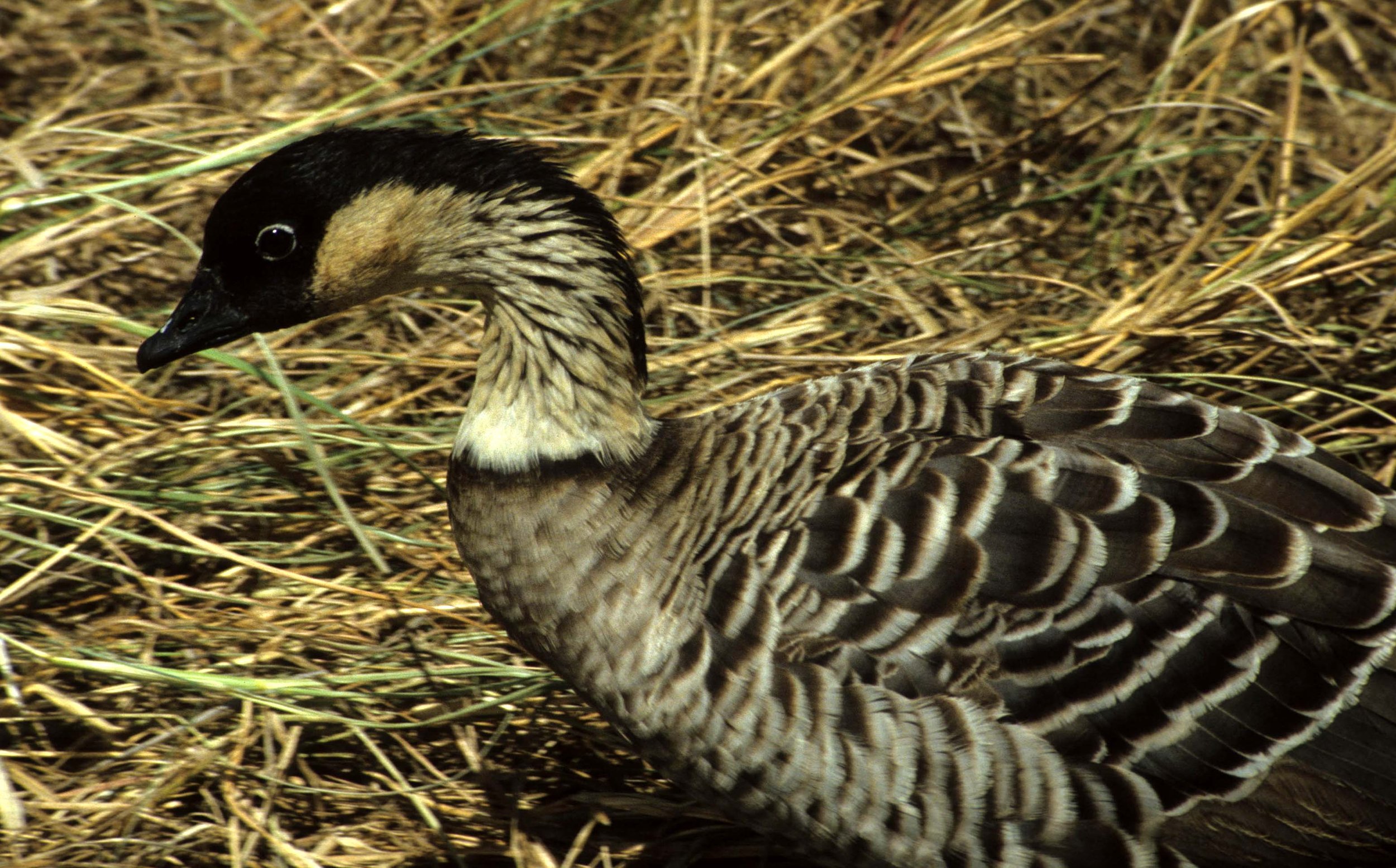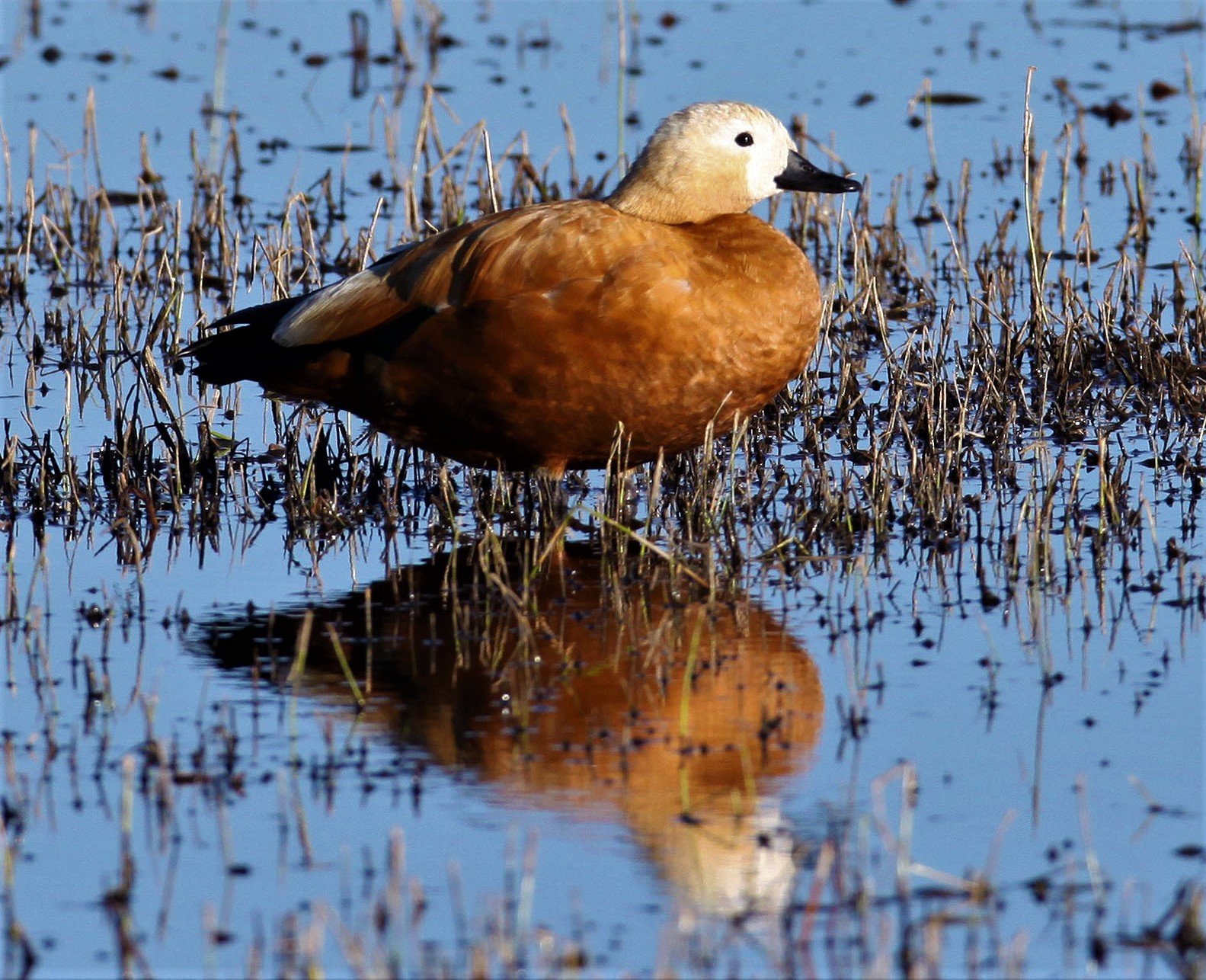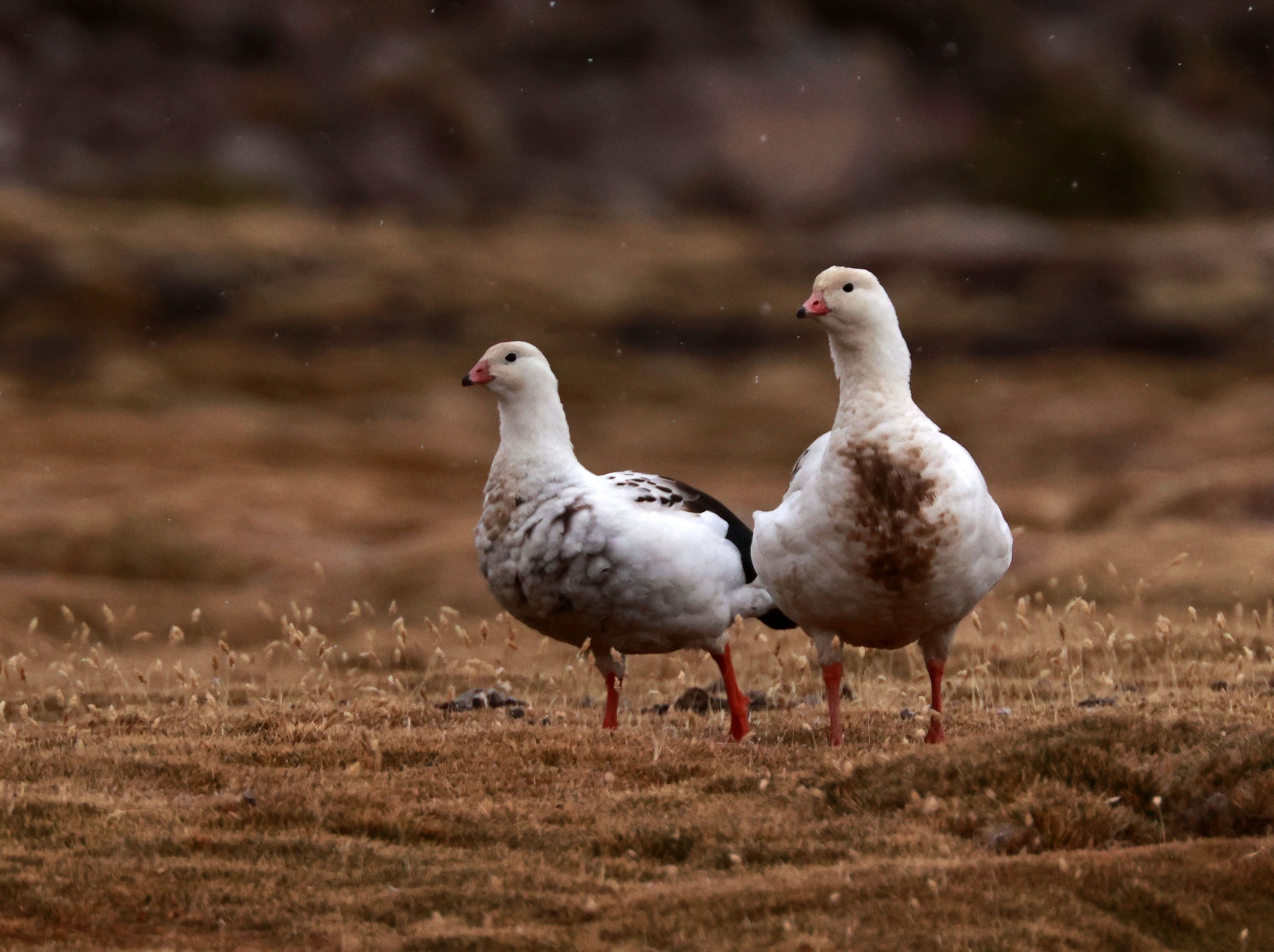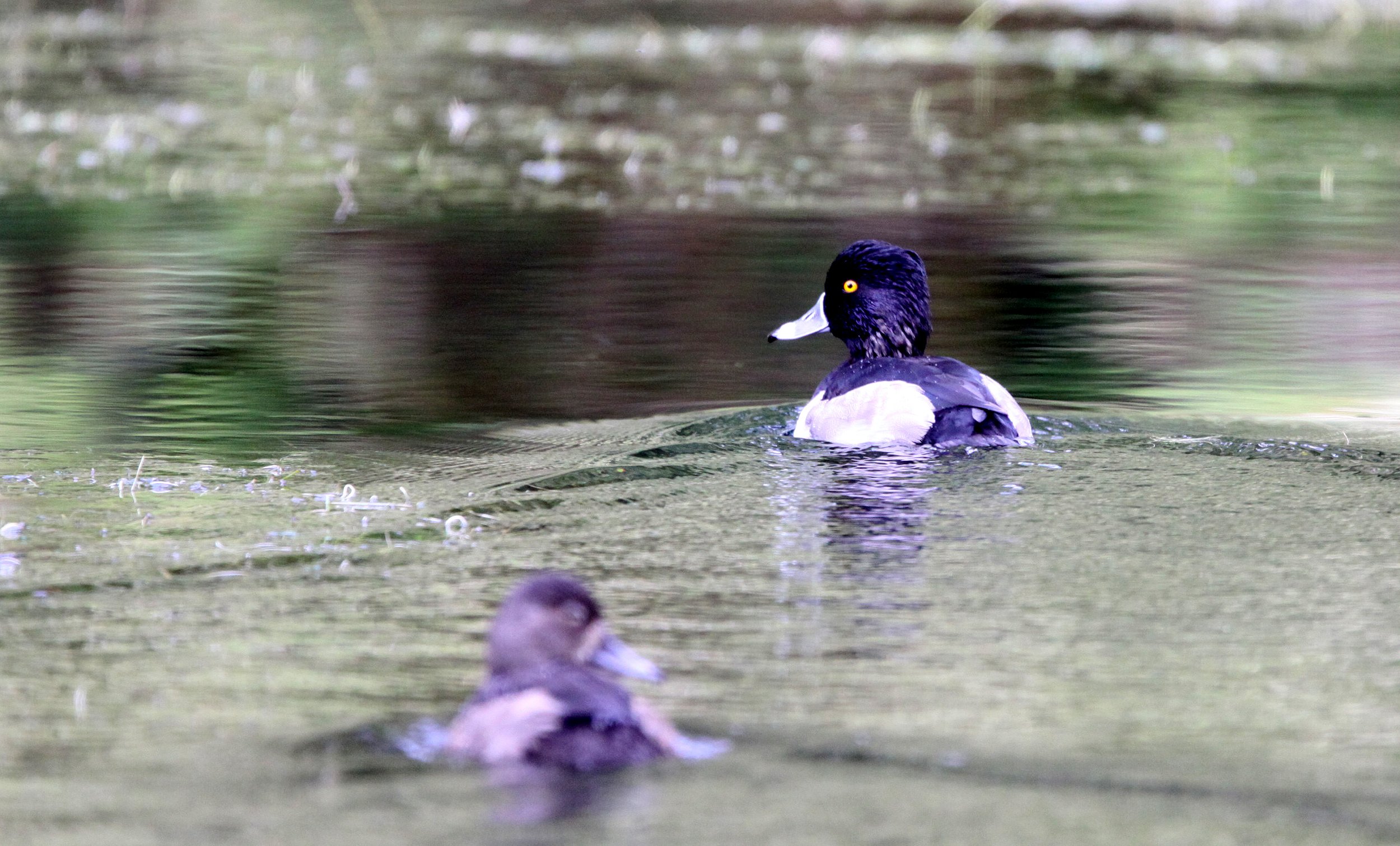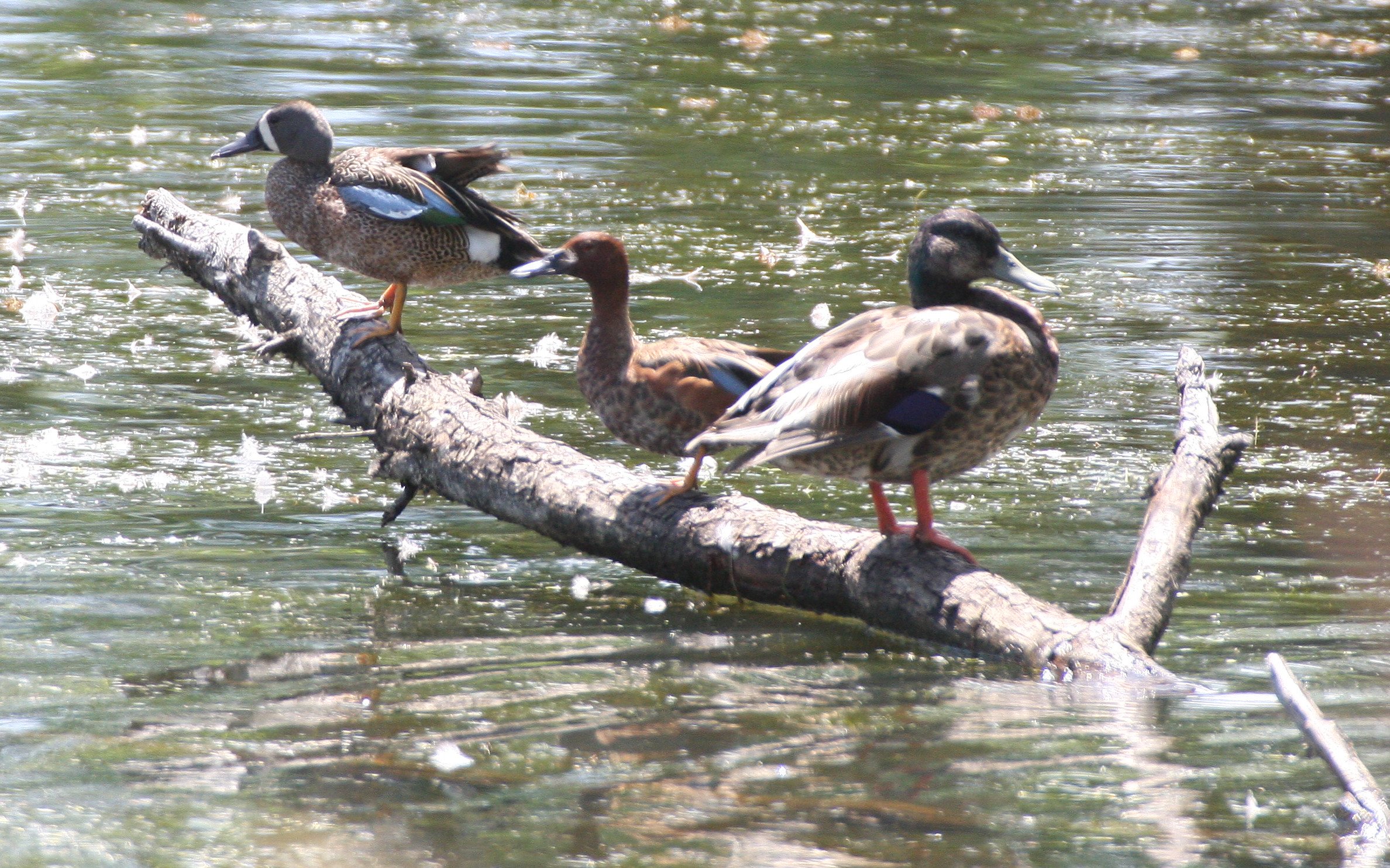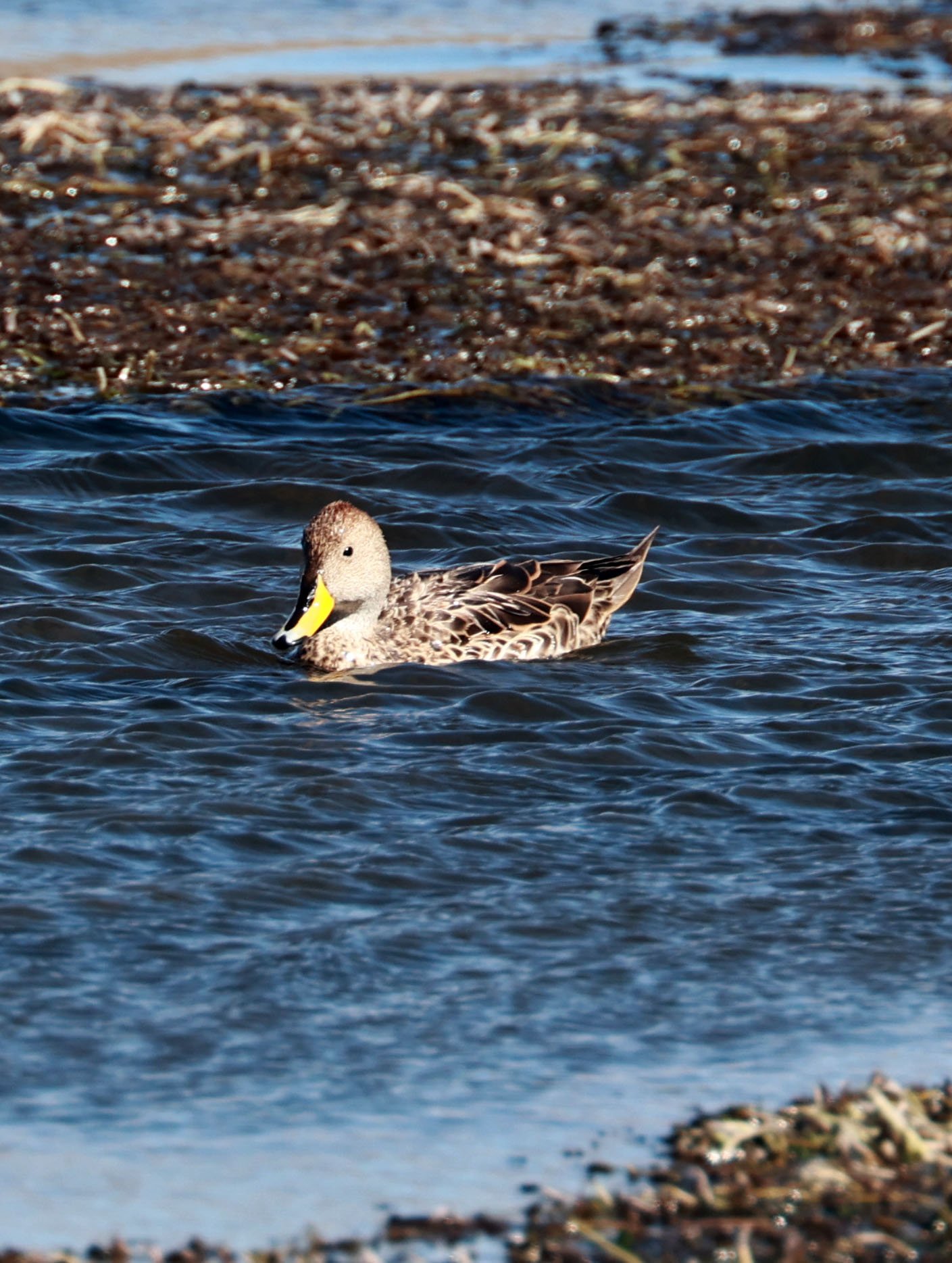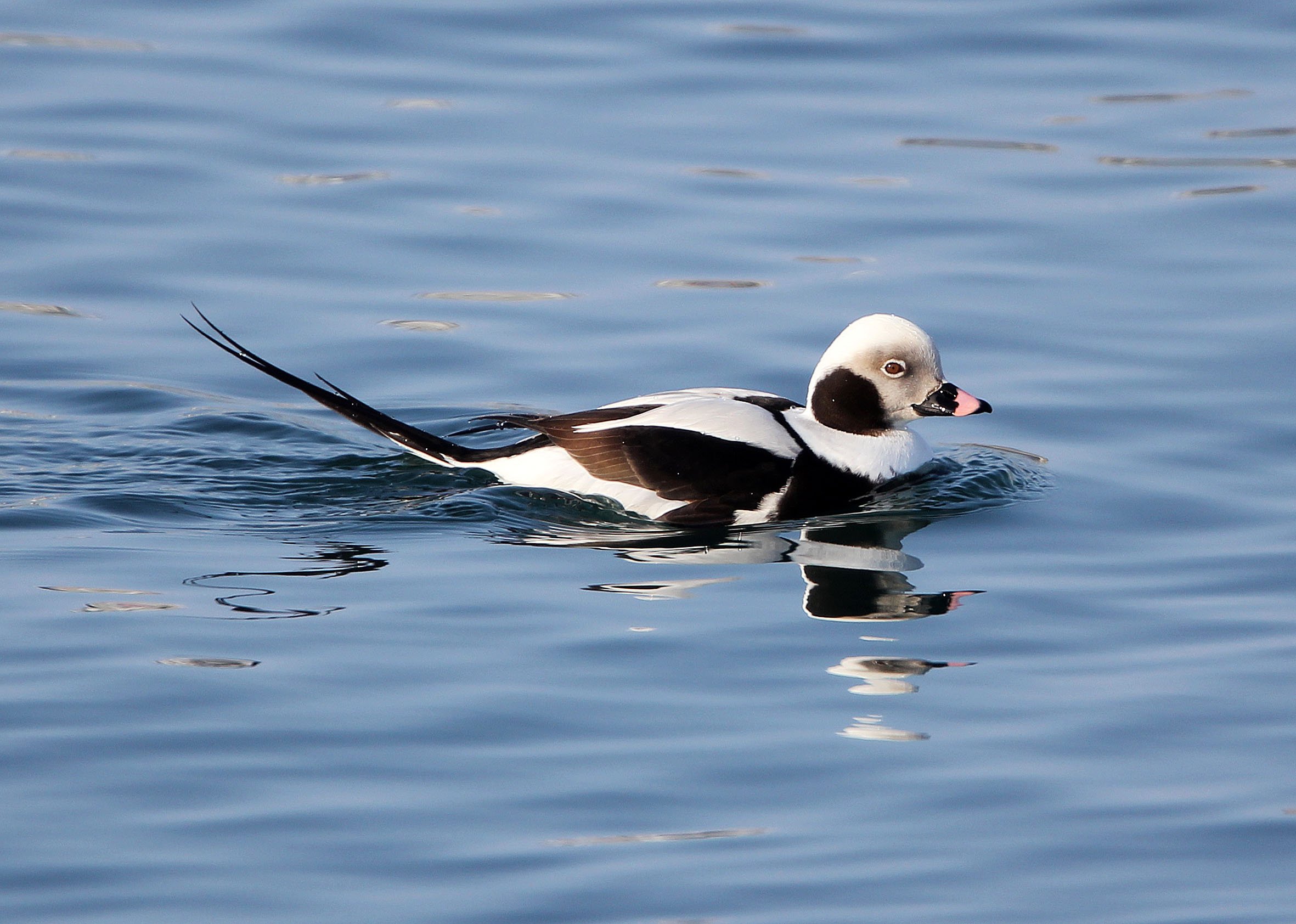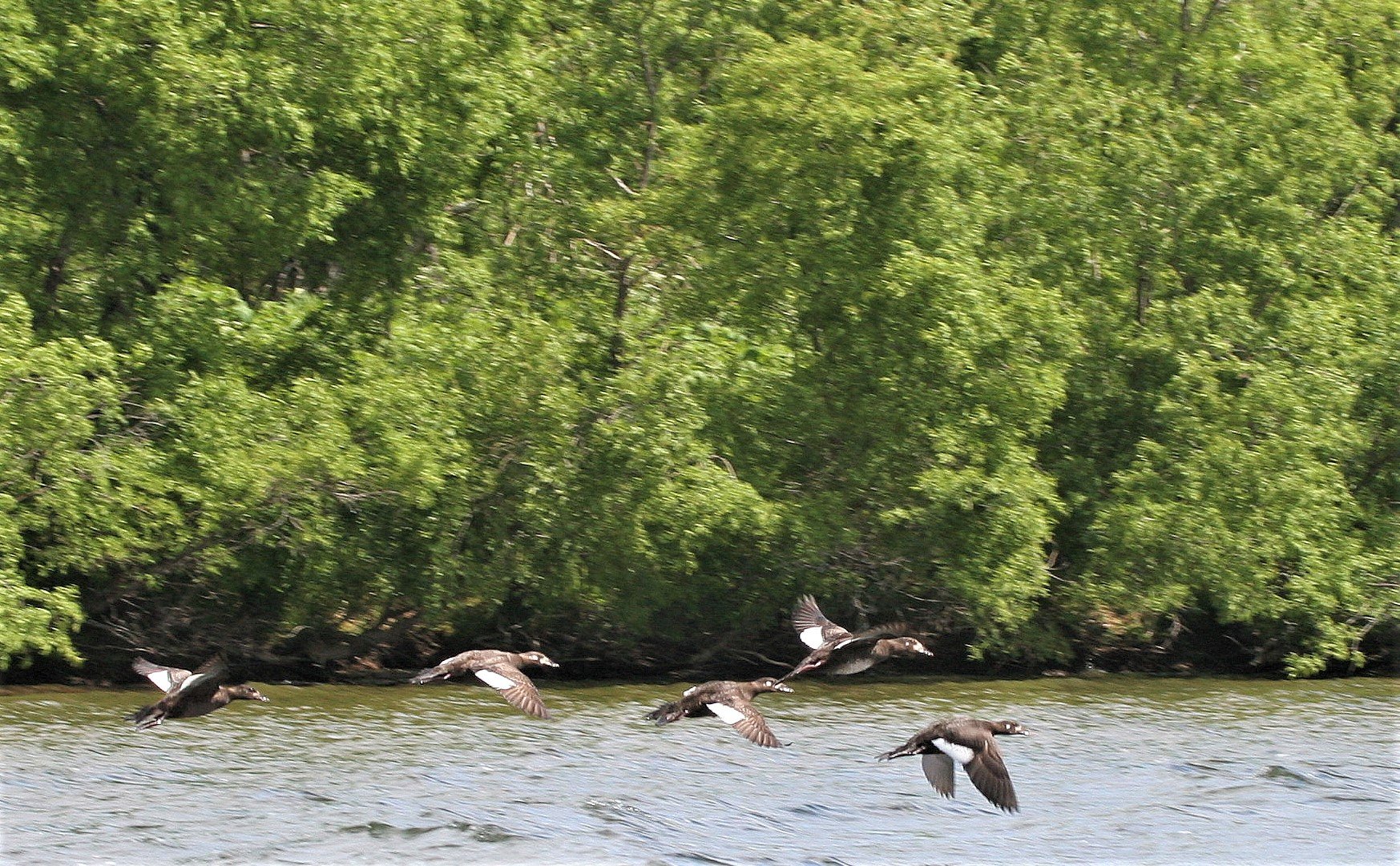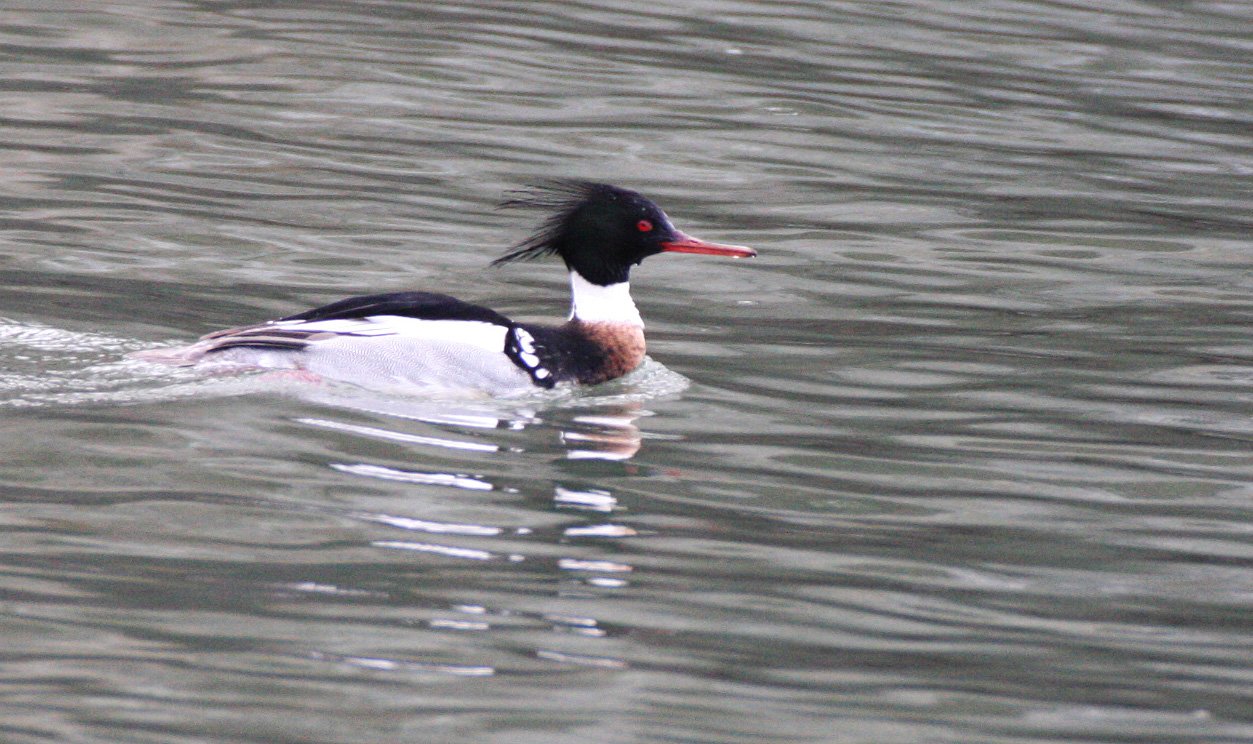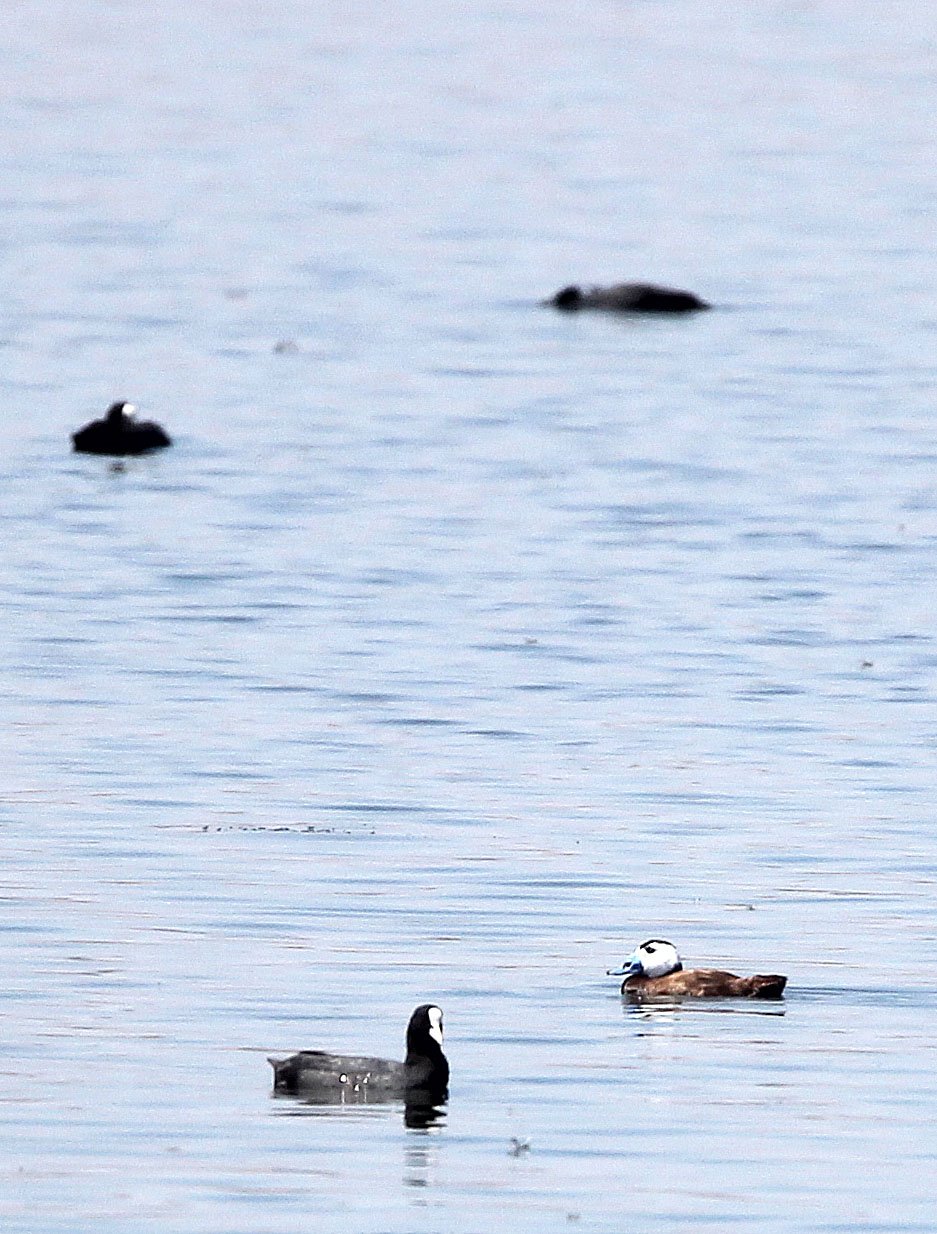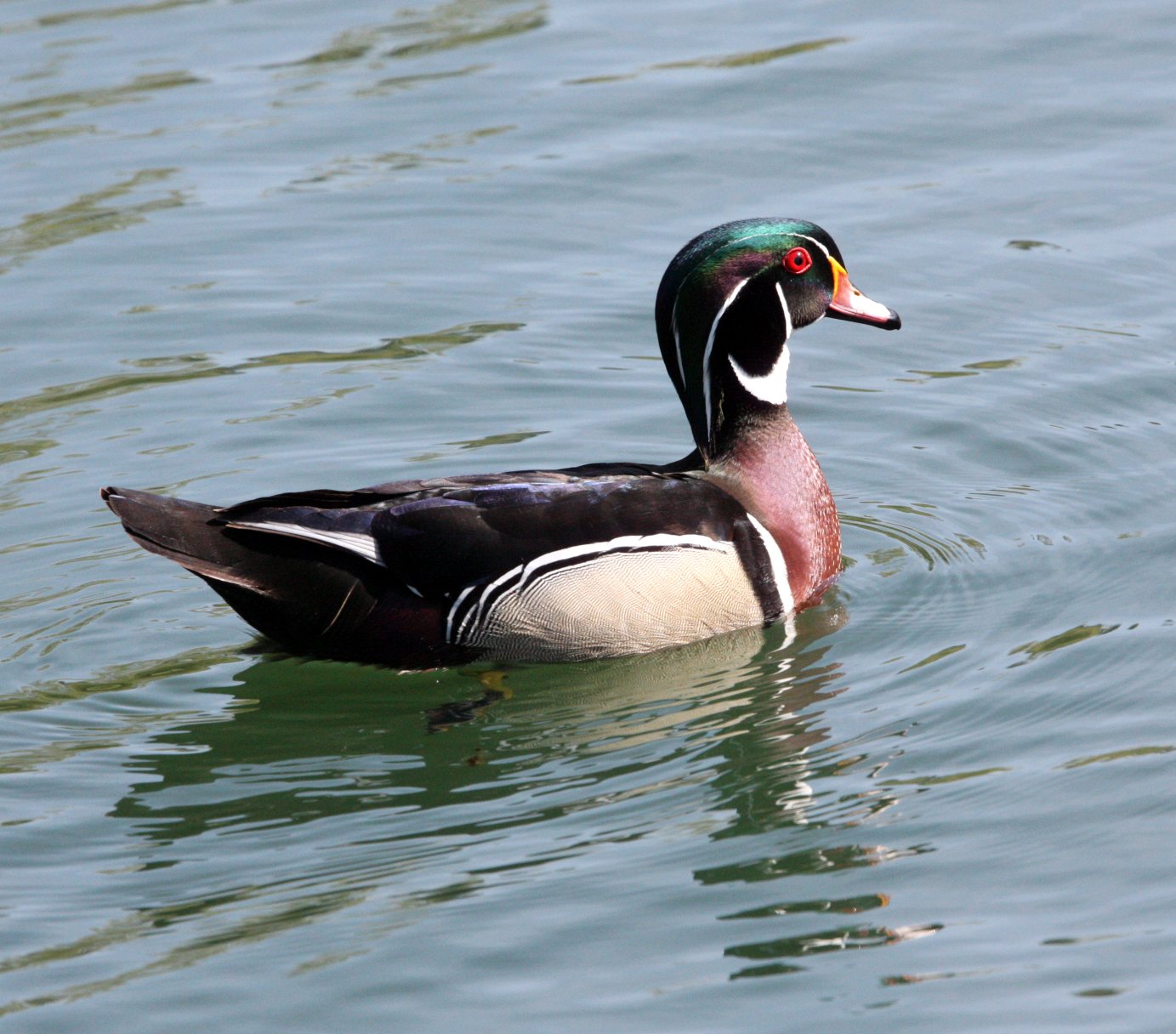
Family Anatidae
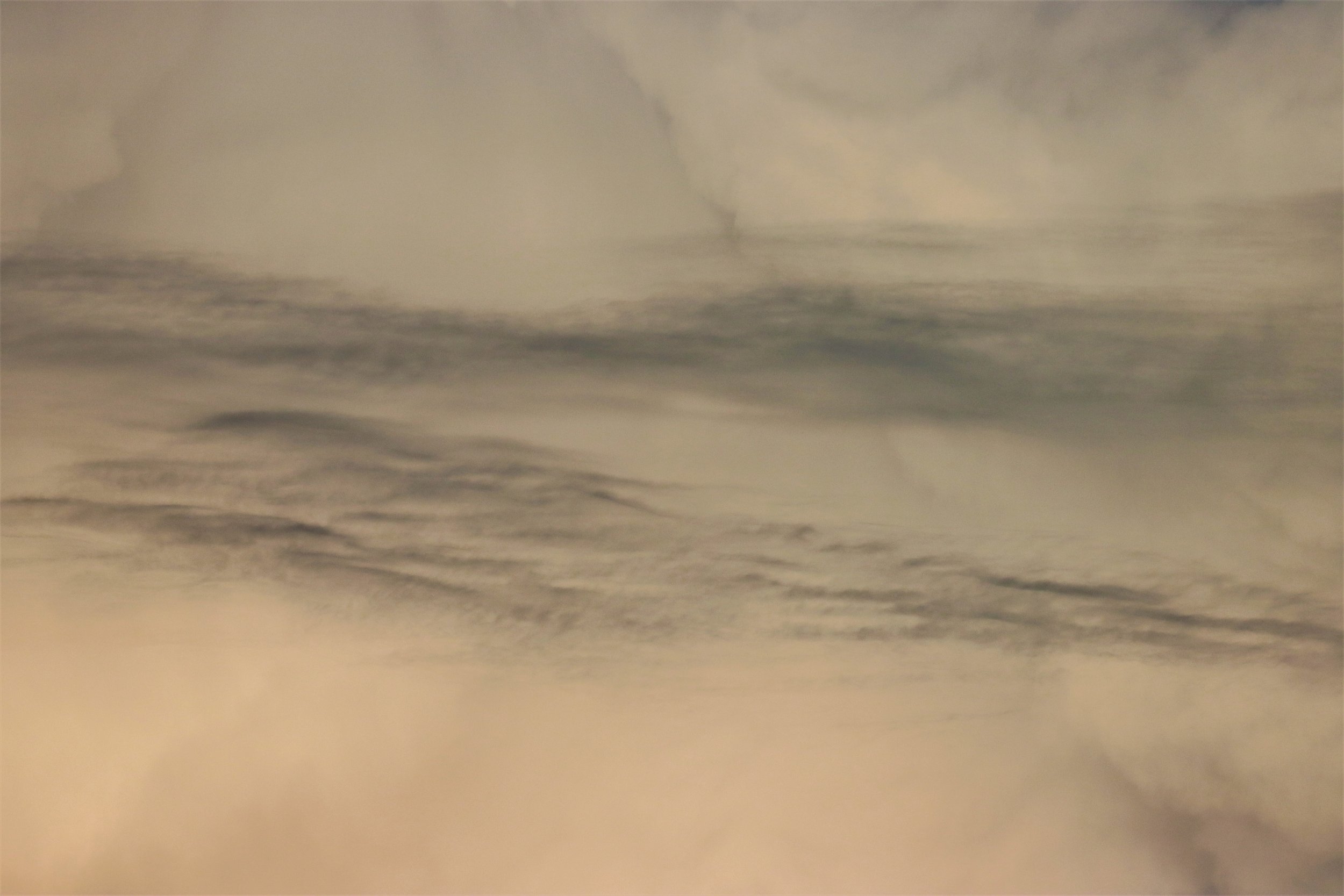
There are so many spectacular duck species but the Mandarins are my favorite for sure!
The Anatidae are the biological family of water birds that includes ducks, geese, and swans. The family has a cosmopolitan distribution, occurring on all the world's continents except Antarctica. These birds are adapted for swimming, floating on the water surface, and in some cases diving in at least shallow water. The family contains around 174 species in 43 genera. (The magpie goose is no longer considered to be part of the Anatidae and is now placed in its own family, Anseranatidae.)
They are generally herbivorous, and are monogamous breeders. A number of species undertake annual migrations. A few species have been domesticated for agriculture, and many others are hunted for food and recreation. Five species have become extinct since 1600, and many more are threatened with extinction.
The name Anatidae for the family was introduced by the English zoologist William Elford Leach in a guide to the contents of the British Museum published in 1820.[8][9] While the status of the Anatidae as a family is straightforward, and which species properly belong to it is little debated, the relationships of the different tribes and subfamilies within it are poorly understood. The listing in the box at right should be regarded as simply one of several possible ways of organising the many species within the Anatidae; see discussion in the next section.
The systematics of the Anatidae are in a state of flux. Previously divided into six subfamilies, a study of anatomical characters by Livezey suggests the Anatidae are better treated in nine subfamilies. This classification was popular in the late 1980s to 1990s. But mtDNA sequence analyses indicate, for example, the dabbling and diving ducks do not belong in the same subfamily.
While shortcomings certainly occur in Livezey's analysis, mtDNA is an unreliable source for phylogenetic information in many waterfowl (especially dabbling ducks) due to their ability to produce fertile hybrids, in rare cases possibly even beyond the level of genus. Because the sample size of many molecular studies available to date is small, mtDNA results must be considered with caution.
One of the rarest species I’ve been fortunate to see is the spectacular Hartlaub’s Duck from the Congo
While a comprehensive review of the Anatidae which unites all evidence into a robust phylogeny is still lacking, the reasons for the confusing data are at least clear: As demonstrated by the Late Cretaceous fossil Vegavis iaai — an early modern waterbird which belonged to an extinct lineage—the Anatidae are an ancient group among the modern birds. Their earliest direct ancestors, though not documented by fossils yet, likewise can be assumed to have been contemporaries with the non-avian dinosaurs. The long period of evolution and shifts from one kind of waterbird lifestyle to another have obscured many plesiomorphies, while apomorphies apparently are quite often the result of parallel evolution, for example the "non-diving duck" type displayed by such unrelated genera as Dendrocygna, Amazonetta, and Cairina. For the fossil record, see below.
Alternatively, the Anatidae may be considered to consist of three subfamilies (ducks, geese, and swans, essentially) which contain the groups as presented here as tribes, with the swans separated as subfamily Cygninae, the goose subfamily Anserinae also containing the whistling ducks, and the Anatinae containing all other clades.
Taxonomy
For the living and recently extinct members of each genus, see the article List of Anatidae species.
Bar-headed Geese over the Chambal, India
Subfamily: Dendrocygninae (one pantropical genus, of distinctive long-legged goose-like birds)
Dendrocygna, whistling ducks (8 living species)
Thalassornis, white-backed duck
Mute swan
Subfamily: Anserinae, swans and geese (3–7 extant genera with 25–30 living species, mainly cool temperate Northern Hemisphere, but also some Southern Hemisphere species, with the swans in one genus [two genera in some treatments], and the geese in three genera [two genera in some treatments]. Some other species are sometimes placed herein, but seem somewhat more distinct [see below])
Cygnus, true swans (6 species, 4 sometimes separated in Olor)
Anser, grey geese and white geese (11 species)
Branta, black geese (6 living species)
Subfamily: Stictonettinae (one genus in Australia, formerly included in the Oxyurinae, but with anatomy suggesting a distinct ancient lineage perhaps closest to the Anserinae, especially the Cape Barren goose)
Stictonetta, freckled duck
Subfamily: Plectropterinae (one genus in Africa, formerly included in the "perching ducks", but closer to the Tadorninae)
Plectropterus, spur-winged goose
Subfamily: Tadorninae – shelducks and sheldgeese
Male common shelduck
(This group of larger, often semiterrestrial waterfowl can be seen as intermediate between Anserinae and Anatinae. The 1986 revision[10] has resulted in the inclusion of 10 extant genera with about two-dozen living species [one probably extinct] in this subfamily, mostly from the Southern Hemisphere but a few in the Northern Hemisphere; the affiliations of several presumed tadornine genera has later been questioned[13] and the group in the traditional lineup is likely to be paraphyletic.)
Pachyanas, Chatham Island duck (prehistoric)
Tadorna, shelducks (6 species, 1 probably extinct) – possibly paraphyletic
Radjah, Radjah shelduck
Salvadorina, Salvadori's teal
Centrornis, Madagascar sheldgoose (prehistoric, tentatively placed here)
Alopochen, Egyptian goose and Mascarene shelducks (1 living species, 2 extinct)
Neochen, (2 species)
Chloephaga, sheldgeese (4 species)
Hymenolaimus, blue duck
Merganetta, torrent duck
Very few ducks are more spectacular than the Long-tailed Duck
Northern Pintail is one of the more spectacular dabbling ducks
Subfamily: Aythyinae, diving ducks (Some 15 species of diving ducks, of worldwide distribution, in two to four genera; The 1986 morphological analysis suggested the probably extinct pink-headed duck of India, previously treated separately in Rhodonessa, should be placed in Netta, but this has been questioned. Furthermore, while morphologically close to dabbling ducks, the mtDNA data indicate a treatment as distinct subfamily is indeed correct, with the Tadorninae being actually closer to dabbling ducks than the diving ducks)
Netta, red-crested pochard and allies (4 species, 1 probably extinct)
Aythya, pochards, scaups, etc. (12 species)
Subfamily: Anatinae, dabbling ducks and moa-nalos (The dabbling duck group, of worldwide distribution, were previously restricted to just one or two genera, but had been extended to include eight extant genera and about 55 living species, including several genera formerly known as the "perching ducks"; mtDNA on the other hand confirms that the genus Anas is over-lumped and casts doubt on the diving duck affiliations of several genera [see below]. The moa-nalos, of which four species in three genera are known to date, are a peculiar group of flightless, extinct anatids from the Hawaiian Islands. Gigantic in size and with massive bills, they were believed to be geese, but have been shown to be actually very closely related to mallards. They evolved filling the ecological niche of turtles, ungulates, and other megaherbivores.
Anas: pintails, mallards, etc. (40–50 living species, 3 extinct)
Chendytes, diving-geese (extinct c. 450–250 BCE, A basal member of the dabbling duck clade[16])
Spatula, shovelers
Mareca, wigeons and gadwalls
Lophonetta, crested duck
Speculanas, bronze-winged duck
Amazonetta, Brazilian teal
Sibirionetta, Baikal teal
Chelychelynechen, turtle-jawed moa-nalo (prehistoric)
Thambetochen, large-billed moa-nalos (2 species, prehistoric)
Ptaiochen, small-billed moa-nalo (prehistoric)

Tribe: Mergini, eiders, scoters, sawbills and other sea-ducks
Common goldeneye couple, male on the right.
(There are 9 extant genera and some 20 living species; most of this group occur in the Northern Hemisphere, but a few [mostly extinct] mergansers in the Southern Hemisphere)
Harlequin Ducks are an impressive species from the Pacific Rim
Shiriyanetta (prehistoric)
Polysticta, Steller's eider
Somateria, eiders (3 species)
Histrionicus, harlequin duck (includes Ocyplonessa)
Camptorhynchus, Labrador duck (extinct)
Melanitta, scoters (6 species)
Clangula, long-tailed duck (1 species)
Bucephala, goldeneyes (3 species)
Mergellus, smew
Lophodytes, hooded merganser
Mergus, mergansers (4 living species, 1 extinct).

Tribe: Oxyurini, stiff-tail ducks (a small group of 3–4 genera, 2–3 of them monotypic, with 7–8 living species)
Oxyura, stiff-tailed ducks (5 living species)
Nomonyx, masked duck
Heteronetta, black-headed duck
Rare endemics like this Blue-winged Goose are included in these galleries
Unresolved: The largest degree of uncertainty concerns whether a number of genera are closer to the shelducks or to the dabbling ducks.
The rare white-winged duck, a species of unclear affiliation.
Wood duck Aix sponsa
See also the monotypic subfamilies above, and the "perching ducks"
Coscoroba, coscoroba swan – Anserinae or same subfamily as Cereopsis?
Cereopsis, Cape Barren goose – Anserinae, Tadorninae, or own subfamily?
Biziura, musk ducks (1 living species)
Cnemiornis, New Zealand geese (prehistoric) – as Cereopsis
Malacorhynchus, pink-eared ducks (1 living species) – Tadorninae, Oxyurinae or Dendrocheninae?
Sarkidiornis, comb duck – Tadorninae or closer to dabbling ducks?
Tachyeres, steamer ducks (4 species) – Tadorninae or closer to dabbling ducks?
Cyanochen, blue-winged goose – Tadorninae or more distant clade?
Nettapus, pygmy geese (3 species) – Anatinae or part of Southern Hemisphere radiation?
Pteronetta, Hartlaub's duck – traditionally dabbling ducks, but may be closer to Cyanochen
Cairina and Asarcornis, Muscovy duck and white-winged duck, respectively (2 species) – traditionally dabbling ducks, but may be paraphyletic, with one species in Tadorninae and the other closer to diving ducks
Aix, Mandarin duck and wood duck (2 species) – dabbling ducks or Tadorninae?
Callonetta, ringed teal – dabbling ducks or Tadorninae?
Chenonetta, maned duck (1 living species) – dabbling ducks or Tadorninae? Includes Euryanas.
Marmaronetta, marbled duck – formerly dabbling ducks; actually a diving duck or a distinct subfamily

White-faced Whistling Duck (Dendrocygna viduata) Uganda
Fulvous Whistling Duck (Dendrocygna bicolor) Yunnan China
Black-bellied Whistling Duck (Dendrocygna autumnalis) Bolivia
Wandering Whistling-Duck (Dendrocygna arcuata) Fogg Dam - Northern Territory
Plumed Whistling Duck (Dendrocygna eytoni) Australia
Lesser Whistling Duck (Dendrocygna javanica) Thailand

Whooper Swan (Cygnus cygnus) Hokkaido Japan
Mute Swan (Cygnus olor) Vancouver Island, British Columbia
Black-necked Swan (Cygnus melancoryphus) Antarctica
Trumpeter Swan (Cygnus buccinator) Washington USA
Black Swan (Cygnus atratus ) Eastern China
Tundra Swan (Cygnus columbianus) Eastern China

Bar-headed Geese (Anser indicus) Tibetan Plateau, China
Greater White-fronted Geese (Anser albifrons) Washington, USA
Bean Geese (Anser fabalis) Eastern China
Swan Goose (Anser cygnoides) Eastern China
Lesser White-fronted Geese (Anser erythropus) Eastern China
Greylag Goose (Anser anser) Eastern China
Snow Geese (Anser caerulescens) Washington, USA
Emperor Goose (Anser canagicus) California USA (only image)
Ross Geese (Anser rossii) California, USA

Brant (Brent) Geese (Branta bernicla) California, USA
Nene (Branta sandvicensis) Hawaii
Cackling Geese (Branta hutchinsii) Washington USA
Barnacle Goose (Branta leucopsis) Svalbard
Canada Geese (Branta canadensis) North America
Red-breasted Goose (Branta ruficollis) Bulgaria

Spur-winged Goose (Plectropterus gambensis) Uganda
South African Shelduck (Tadorna tadornoides) South Africa
Egyptian Goose (Alopochen aegyptiaca) Eastern & Southern Africa
Common Shelduck (Tadorna tadorna) China
Radjah Shelduck (Radjah radjah) Northern Australia
Ruddy Shelduck (Tadorna ferruginea) China, Russia, Thailand, India
Andean Goose (Chloephaga melanoptera) Bolivia
Ashy-headed Goose (Chloephaga poliocephala) Argentina
Upland Geese (Chloephaga picta) Argentina
Kelp Goose (Chloephaga hybrida) Argentina
Ruddy-headed Goose (Chloephaga rubidiceps) Argentina

Southern Pochard (Netta erythrophthalma) South Africa
Canvasback (Aythya valisineria) California
Redhead (Aythya americana) California
Red-crested Pochard (Netta rufina) India
Common Pochard (Aythya ferina) Japan
Rosy-billed Pochard (Netta peposaca) Brazil
Ring-necked Duck (Aythya collaris) Washington USA
Ferruginous Duck (Aythya nyroca) Japan, Thailand
Tufted Duck (Aythya fuligula) Japan
Greater Scaup (Aythya marila) Japan
Lesser Scaup (Aythya affinis) Washington USA

African Black Duck (Anas sparsa) Ethiopia
Indian Spot-billed Duck (Anas poecilorhyncha) India, Thailand
Mallard (Anas platyrhynchos) California
Meller’s Duck (Anas melleri) Madagascar
Eastern Spot-billed Duck (Anas zonorhyncha) Japan, China
Yellow-billed Duck (Anas undulata) Southern Africa
Mexican Duck (Anas diazi) Washington New Mexico
Cape Teal (Anas capensis) South Africa
Silver Bahamania Teal (Anas bahamensis) Captive Malaysia
Red-billed Teal (Anas erythrorhyncha) Southern Africa
Northern Pintail (Anas acuta) Washington USA
Eurasian Teal (Anas crecca) Japan

Green-wing Teal (Anas carolinensis) California
Cinnamon Teal (Spatular cyanoptera) Washington USA
Cape Shoveler (Spatula capensis) South Africa
Silver Teal (Spatula versicolor) captive Malaysia
Blue-winged Teal (Spatula discors) Illinois
Garganey (Spatula querquedula) Thailand
Northern Shoveler (Spatula clypeata) Western USA
Gadwall (Mareca strepera) Yunnan, China
American Wigeon (Mareca americana) Washington USA
Eurasian Wigeon (Mareca penelope) Yunnan China
Brazilian Teal (Amazonetta brasiliensis) Brazil
Crested Duck (Lophonetta specularioides) Chile
Falcated Teal (Mareca falcata) Yunnan China
Andean Teal (Anas andium) Ecuador
Yellow-billed Teal (Anas flavirostris) Ecuador
Common Eider ( Somateria mollissima) Alaska
Puna Teal (Spatula puna) Chile
Andean Duck (Oxyura ferruginea) Lauca National Park, Chile and Antisana National Park, Ecuador

Harlequin Duck (Histrionicus histrionicus) West Coast USA, Russian Far East
White-winged Scoter (Melanitta deglandi) Lake Baikal Russia
Long-tailed Duck ( Clangula hyemalis) Washington, Hokkaido
Surf Scoter (Melanitta perspicillata) Washington USA
Stejneger's Scoter (Siberian) (Melanitta stejnegeri) Kamchatka
Black or American Scoter (Melanitta americana) Japan
Common Goldeneye (Bucephala clangula) Hokkaido
Barrow’s Goldeneye (Bucephala islandica) Washington USA
Buffle Head (Bucephala albeola) Washington USA
Smew (Mergellus albellus) Eastern China
Hooded Merganser (Lophodytes cucullatus) Washington USA
Common Merganser or Goosander (Mergus merganser) Alaska

Red-breasted Merganser (Mergus serrator) West Coast USA
Ruddy Duck (Oxyura jamaicensis) Northern California
Coscoroba Swan (Coscoroba coscoroba) Antarctica
Knob-billed or Comb Duck (Sarkidiornis melanotos) Southern Africa
White-headed Duck (Oxyura leucocephala) Spain
Scaly-sided Merganser (Mergus squamatus) Korea
Flying Steamer (Tachyeres patachonicus) Argentina, Tierra del Fuego
Fuegian Steamer (Tachyeres pteneres) Argentina, Tierra del Fuego
Blue-winged Goose (Cyanochen cyanoptera) Ethiopia
Cotton Pygmy Geese (Nettapus coromandelianus) Thailand
African Pygmy Geese (Nettapus auritus) Ethiopia
Green Pygmy Goose (Nettapus pulchellus) Australia

Hartlaub’s Duck (Pteronetta hartlaubii) Central African Republic
Mandarin Duck (Aix galericulata) Japan, China
Marbled Duck (Marmaronetta angustirostris) Tunisia
Ringed Teal (Callonetta leucophrys) Captive in Malaysia
Wood Duck (Aix sponsa) Western USA
Muscovy Duck (Cairina moschata) Worldwide, Wild in Peru
Australian Ducks
Australian Wood Duck or Maned Duck (Chenonetta jubata) Perth - Western Australia
Hardhead or duck, also known as the White-eyed Duck (Aythya australis) Herdsman Lake - Western Australia
Pink-eared Duck (Malacorhynchus membranaceus) Brusselton Wetlands - Western Australia 600mm
Blue-billed Duck (Oxyura australis) Perth - Western Australia
Pacific Black Duck (Anas superciliosa) Albany Wetlands - Western Australia
Eastern Musk Duck (Biziura lobata menziesi) Narawntapu National Park, Bakers Beach - Tasmania
Radjah Shelduck (Tadorna radjah) Daintree Town, Daintree River - Queensland
Australian shelduck (Tadorna tadornoides) Narawntapu National Park, Bakers Beach - Tasmania
Grey Teal (Anas gracilis) Laratinga Wetlands - South Australia
Chestnut Teal (Anas castanea) Maria Island NP - Tasmania
Australasian shoveler (Spatula rhynchotis) Laratinga Wetlands - South Australia
Cape Barren Goose (Cereopsis novaehollandiae) Maria Island NP - Tasmania


